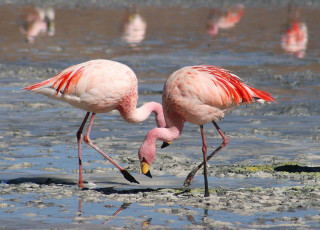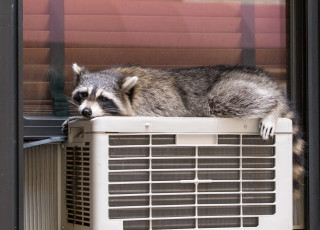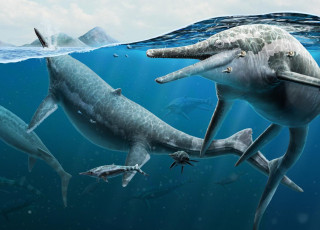Orcas and Humans, a Shared Future
Orcas: Our Shared Future
This article was published at the opening of Orcas: Our Shared Future, a special exhibition at NHMU open through April 20, 2025.
By Jude Coleman
The ocean’s top predator was once considered a fearsome man-eater by Western cultures. But after years of captivity and study, researchers came to realize it was a vital member of marine ecosystems. These predators are orca whales.
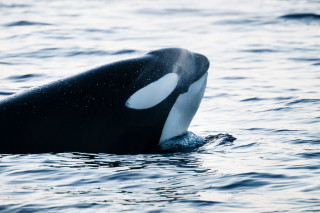
Also known as "killer whales," orcas are found in every ocean across the world, making them the most widely distributed cetacean (that’s the group that includes whales, dolphins, and porpoises). While they play an important role as apex predators in the sea, on land, they are important to many First Nation groups. There is a deep cultural connection between many coastal First Nations and orcas expressed through the integration of orca imagery on ceremonial regalia and contemporary art said Michael Barnes, the director of exhibitions at the Royal British Columbia Museum. In 2021, Barnes and his colleagues opened an exhibit about the whales, which is on display at the Natural History Museum of Utah in Salt Lake City from October 19, 2024, through April 20, 2025.
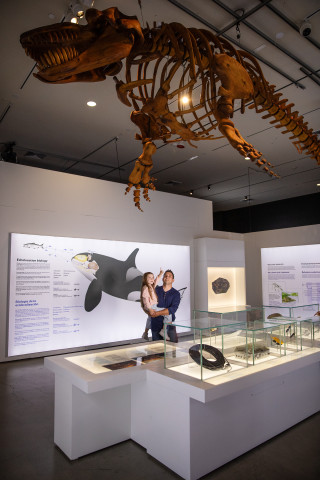
Throughout six engaging sections, the exhibit weaves a story of orca ecology, their importance to Indigenous communities, and their struggle with captivity. An undercurrent of the exhibit is how orcas and humans have a shared future, and face similar environmental threats, hence its name, Orcas: Our Shared Future.
“If orcas aren't doing well, humans aren't going to do well, because of the environmental crisis and pollution crisis in the ocean,” Barnes said.
Like many other whales, orcas live in pods. Orca pods are made up of tightly bonded relatives structured around a matriarch—typically the oldest female in a family. These pods can hold dozens of members, and each group has its own distinct culture.
With the whales’ wide range comes a variety of ecotypes—a type of whale unique to its region, but not necessarily a different species. In the North Pacific, there are three main types of killer whales: resident, transient, and off-shore. Each has different diets and lifestyles, despite overlapping in range. Transient orcas, for example, dine on marine mammals, such as seals, sea lions, and porpoises. Meanwhile, resident whales only eat coastal fishes, with salmon making up the bulk of their diet.
Transient and resident orcas both live in the coastal waters that stretch from southern Alaska to central California. A subpopulation of resident whales—the Southern Residents—is one of the most endangered orca populations. As of December 2023, only 74 of these whales remain. The exhibit puts a particular emphasis on Southern Residents because of their vulnerability.
“Southern Residents also were the main focus here for the actual start of what came to be orca research globally,” said Gavin Hanke, the curator of vertebrate zoology at the Royal British Columbia Museum. “The first orcas in captivity were Southern Resident orcas, and that's a big part of the story.”
Taking orcas for captivity began in the early 1960s. At that time, little was understood about the animals. They were presumed to be highly dangerous and likely to kill humans. But the first whale captured, Moby Doll, began to change the public’s perspective. He only lived in captivity for three months before dying due to unlivable conditions—and in that time, people shifted their mindset from fear to interest.
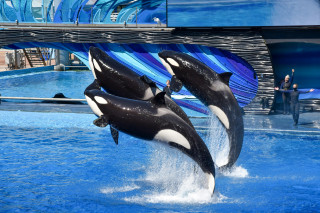
A frenzy of collection began, particularly near Washington State and British Columbia. Over the next decade or so, more than 100 orcas were captured and many were taken from the North Pacific. Most were kept in inhumane conditions and treated like any other aquarium fish, said Hanke. Perhaps the only silver lining was that scientists were able to learn more about the animals through studying them. And the more they learned, the clearer it became that the whales shouldn’t be kept in the conditions they were in, let alone in captivity. The public’s attitude about orcas continued to change, now to a place of love and protection. Federal and state governments went on to pass a series of acts that protected orcas, including the Marine Mammal Protection Act in 1972 and the Orca Welfare and Safety Act in 2016.
“There was ultimately a sort of global benefit for the whales, but it came at the cost of this dark period of captivity,” Hanke said.
Although orca capture is now illegal in the United States and some captive orcas have been freed, the animals are still threatened in myriad ways. Orcas are an indicator species: their presence and well-being is an indicator of the health of their environment. Sound pollution, for example, is a major concern for orcas as well as other marine mammals. They rely on sound to navigate the sea, find food, and stay connected to their family, and noise pollution can interfere with those undersea signals.
Environmental contaminants also pose a significant problem. As apex predators, orcas are the final stop for all pollutants that end up in the ocean—like household chemicals, pesticides, and plastics—even if they aren’t directly eating them. That’s because organisms at each level of the food chain have the opportunity to take on pollutants directly or eat another organism that did. Those contaminants are all ultimately present in orcas’ meals.
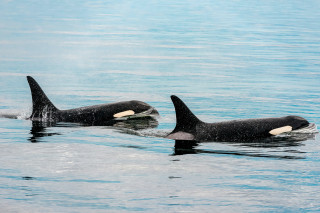
Some of the threats killer whales face mirror the threats that humans also face, particularly because both humans and orcas are at the top of the food chain. A polluted planet will impact them just as it impacts us. In that way, “Our fates are tied to theirs,” Hanke said.
Despite the dire circumstances for some orca populations, there’s still hope to recover, emphasized Hanke. Even though southern resident populations are low, researchers still see a calf or two born each year. Whale populations can recover if the ocean is taken care of, which anyone can be a part of. Because everything ends up in the ocean eventually, a major way to help is to avoid adding toxic substances to the environment or pouring them down the drain.
“The big message is to tread lightly on the planet and do as much as you can to avoid polluting the world,” Hanke said. “That would benefit all life, not just orcas.”
Orcas at NHMU
Learn more about orcas in Orcas: Our Shared Future, a special exhibition open at NHMU through April 20, 2025.


